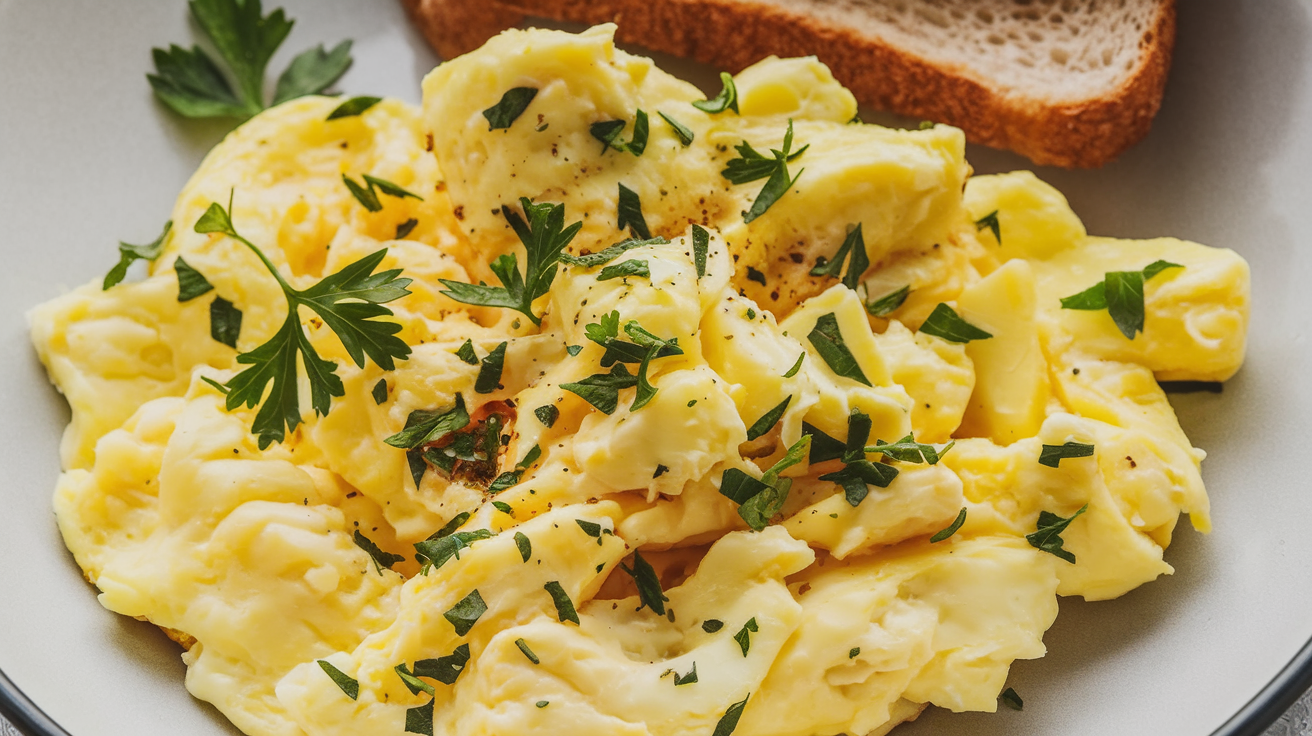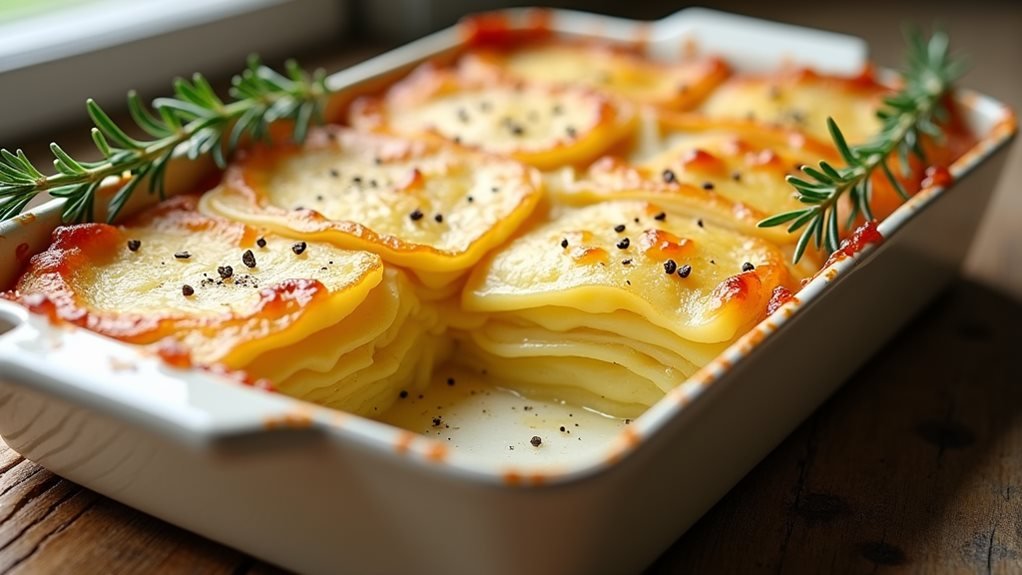To create Gordon Ramsay’s No-Whisk Scrambled Eggs, start with 3-4 fresh eggs and a tablespoon of chilled unsalted butter in a skillet. Cook over high heat without whisking; simply stir the eggs gently for about 30 seconds, then allow them to rest for 10 seconds. Repeat this until tender curds form. Season with salt at the end to keep the eggs fluffy, and add a dollop of crème fraiche for creaminess. Lastly, you can sprinkle diced scallions for flavor. This method guarantees creamy, delicate scrambled eggs that impress, and there’s more to investigate for perfecting your technique.
Ingredients Needed for Scrambled Eggs
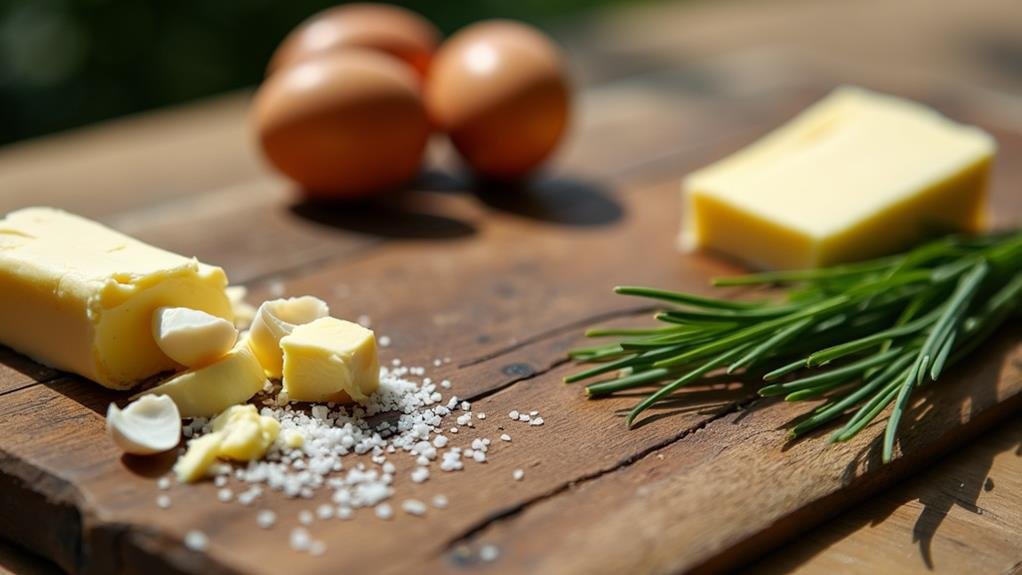
To prepare Gordon Ramsay’s no-whisk scrambled eggs, gather a few essential ingredients. Begin with large, fresh hen eggs—typically three or four will be sufficient, depending on your appetite. You will also require unsalted dairy butter, which enhances the eggs’ rich flavor and creamy consistency. Keeping the butter chilled is vital, as it helps regulate the cooking process. For an extra layer of creaminess, consider incorporating crème fraîche. This ingredient adds a luxurious texture to your scrambled eggs without the need for whisking. If you desire a hint of additional flavor, chopped chives can elevate the dish, providing a refreshing burst.
It’s important to remember that salt should be sprinkled at the end of cooking. Adding it too early can impact the fluffiness of your scrambled eggs. With these fundamental components, you’ll create a delightful and uncomplicated breakfast. The beauty of this method lies in its simplicity, allowing you to enjoy your culinary creativity while crafting a dish that’s both satisfying and impressive. Enjoy the journey, and let your palate lead the way.
Preparing the Eggs in the Pan
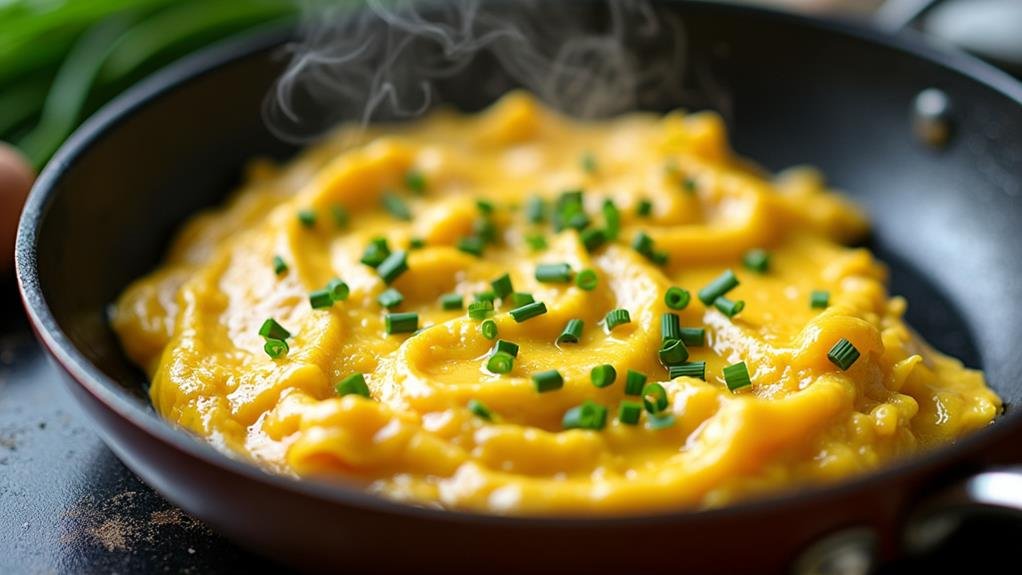
In the skillet, place cold whole eggs along with a generous dollop of Kerrygold unsalted butter. This pairing creates a rich foundation for your scrambled eggs, essential for a delightful morning meal. There’s no need to whisk at this stage; the elegance of Gordon Ramsay’s method lies in its straightforwardness. As the butter melts and envelops the eggs, it prepares for a creamy consistency, enhanced by the addition of fresh ingredients like high-quality dairy and farm-fresh eggs.
Once the eggs are in the skillet, maintain high heat to initiate the cooking process. Continuously move the skillet on and off the burner to manage the temperature, ensuring even cooking without scorching. For roughly 30 seconds, stir the eggs gently with a silicone spatula, then allow them to rest off the heat for 10 seconds. Repeat this sequence until the eggs start to form tender curds.
Cooking Technique for Fluffiness
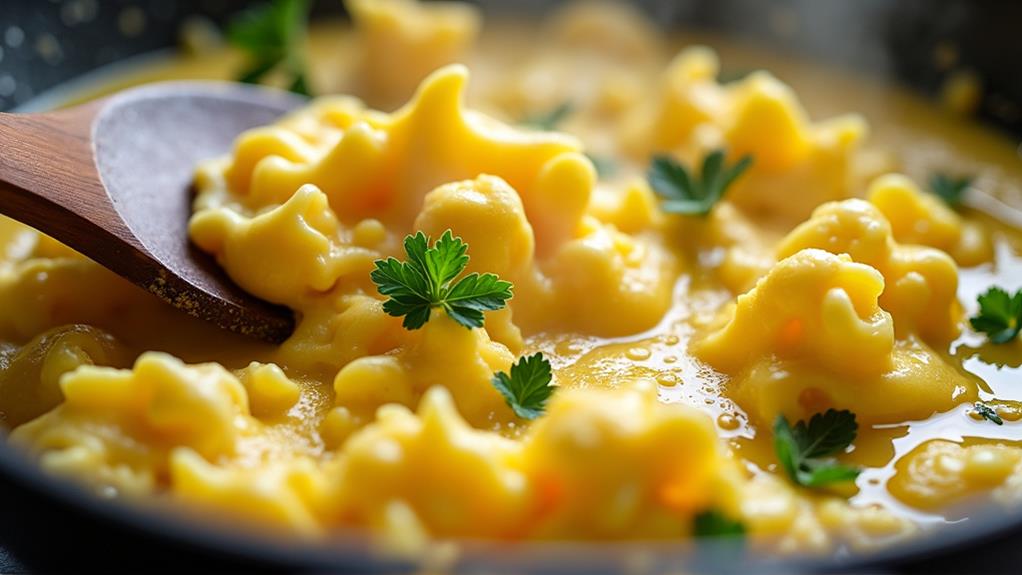
Achieving lightness in scrambled eggs relies heavily on the cooking technique employed. Celebrity chef Gordon Ramsay promotes a distinctive approach that prioritizes folding over whisking, resulting in a delicate and airy texture. By cracking cold whole eggs directly into a heated skillet and incorporating butter, you establish a rich base. As the eggs begin to set, use a spatula to gently fold them, allowing steam to escape and fostering that fluffy outcome. This technique ensures a creamy, sumptuous consistency while avoiding a watery texture, a hallmark of Ramsay’s renowned culinary creations.
Here are several important practices to consider:
- High-heat cooking: Begin with high heat to swiftly scramble the eggs, adjusting the skillet on and off the burner to manage the temperature.
- Timing is essential: Scramble the eggs for approximately 30 seconds over heat, then pause for about 10 seconds. This helps to prevent overcooking.
- Remove prematurely: Take the eggs off the heat just before they are entirely cooked. They will continue to cook with the residual heat, maintaining their tenderness.
Seasoning and Adding Dairy

Seasoning scrambled eggs at the right moment enhances flavor and texture. Chef Gordon Ramsay highlights that salt should be added toward the end of the cooking process. If you add salt too early, it can negatively affect the eggs’ texture, making them watery and less fluffy. By waiting until the eggs are nearly finished, you ensure they maintain their ideal consistency. To achieve a creamy texture akin to Ramsay’s Mushroom Risotto, it’s essential to incorporate ingredients thoughtfully.
When it comes to dairy, Ramsay prefers crèmerie, specifically crème fraîche, which should be added just before finishing. This choice enriches the eggs and cools them slightly, preventing overcooking. While some chefs opt for heavy cream or half-and-half for added richness, crème fraîche offers a unique creaminess that elevates the dish. You might also consider adding butter at the beginning or end, depending on your flavor preference.
Chopped chives serve as an excellent addition, providing a burst of color and flavor. Remember, seasoning is about balancing tastes, so feel free to experiment with herbs and spices that appeal to you. By mastering the timing of your seasoning and the thoughtful addition of dairy, you’ll create delicious, fluffy scrambled eggs that please your palate.
Tips for Perfect Scrambled Eggs
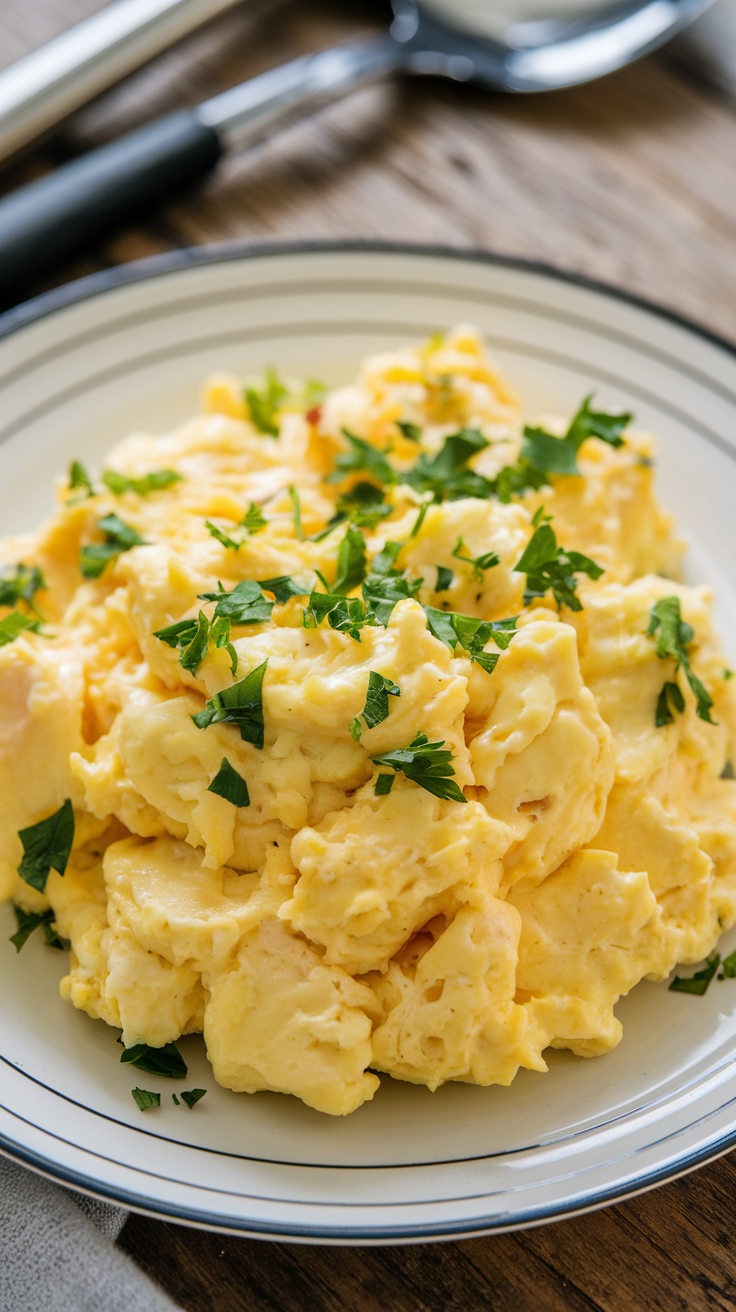
Perfecting scrambled eggs involves more than just selecting quality ingredients; it is equally about technique. To create the ideal scrambled eggs, focus on your cooking method and timing. For example, incorporating fresh herbs can enhance flavor in various dishes, much like how precise cooking techniques elevate the taste of scrambled eggs. Here are some tips to elevate your egg preparation:
- Use chilled eggs: Starting with whole eggs from the refrigerator helps maintain a creamy consistency.
- Manage the heat: Cook on high heat but adjust by moving the skillet on and off the burner. This technique prevents overcooking while achieving a fluffy texture.
- Incorporate dairy thoughtfully: Add premium butter at the beginning for richness, and consider stirring in crème fraîche toward the end for added creaminess without compromising the eggs’ texture.
